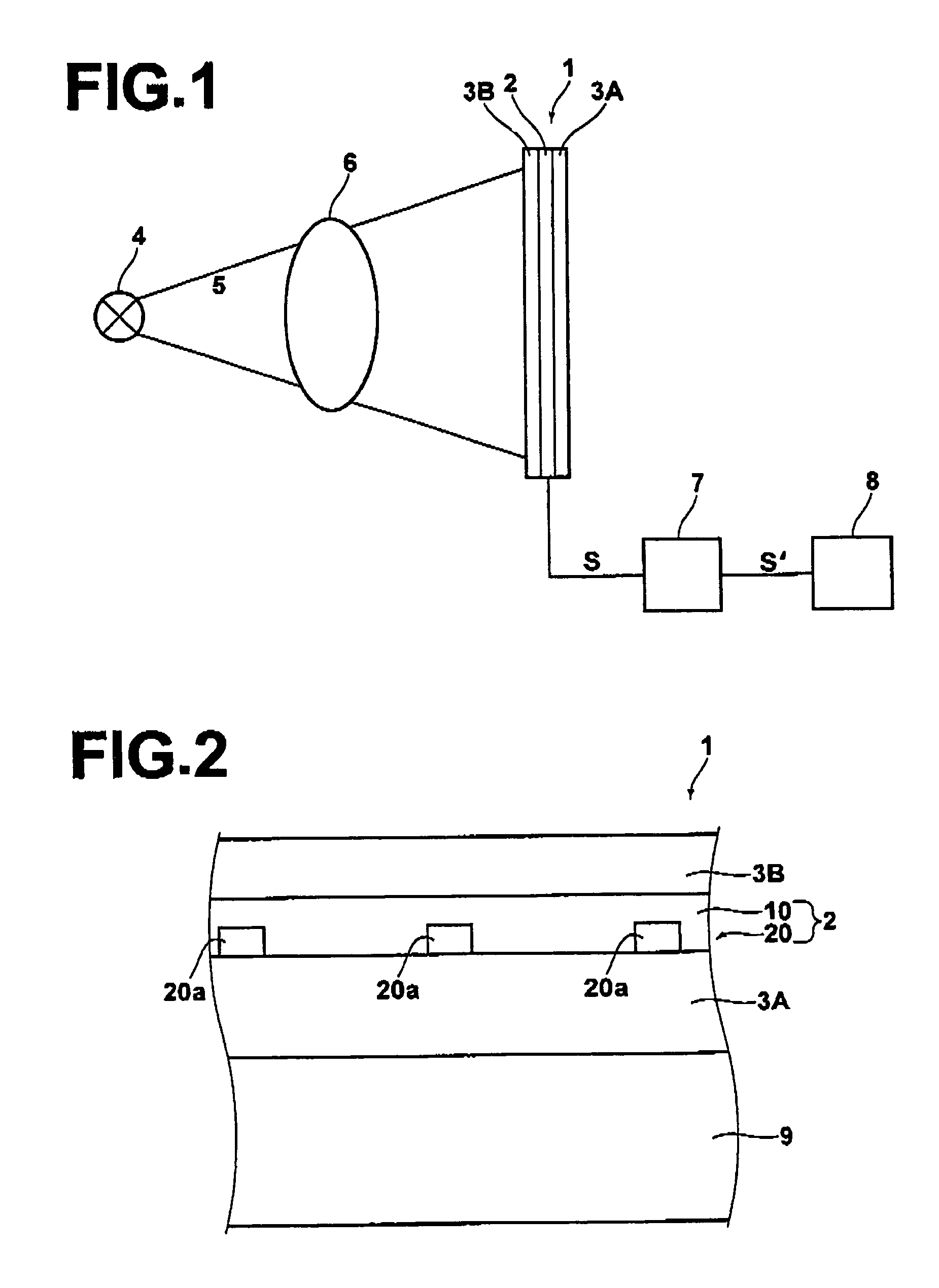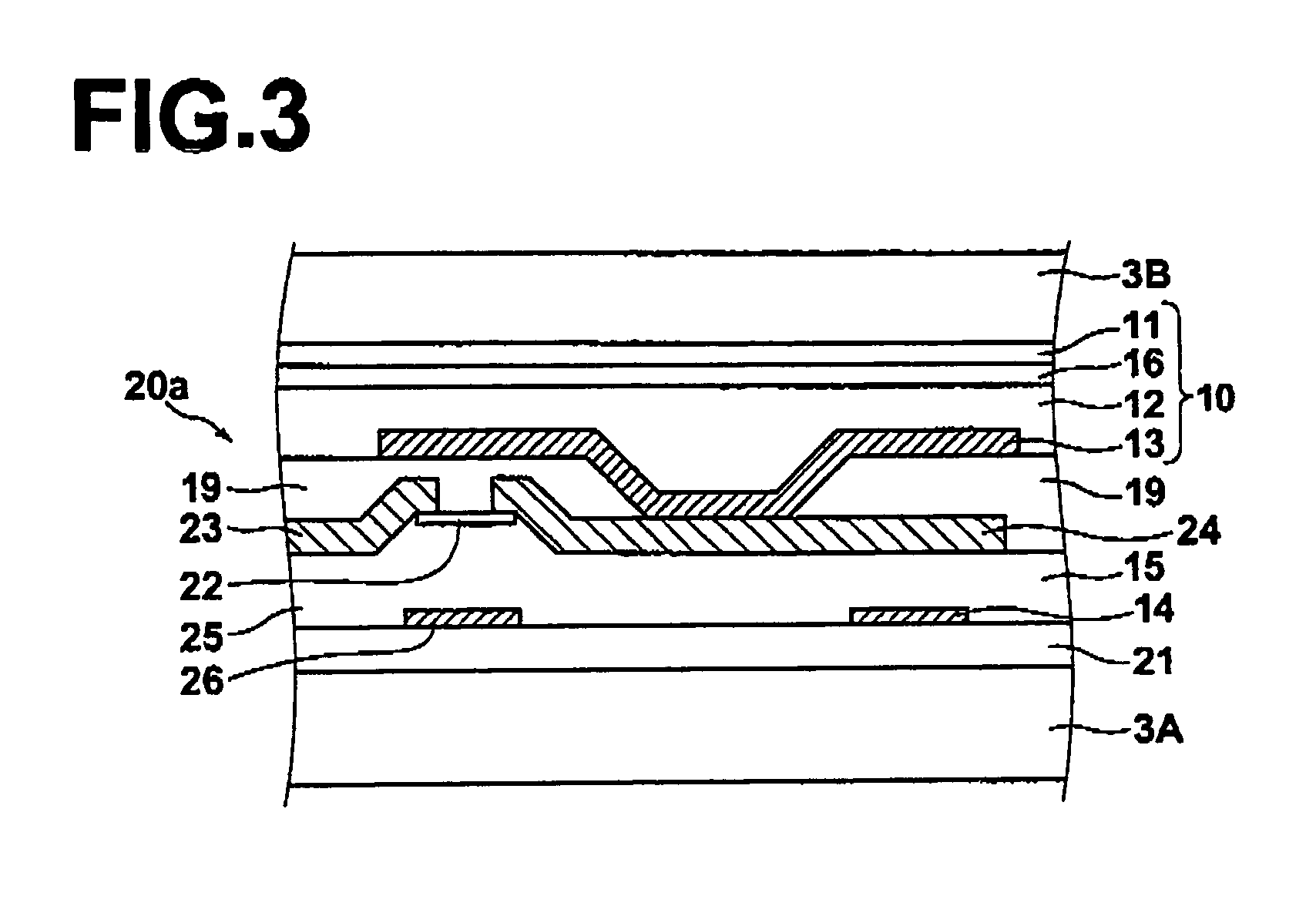Dual-phosphor flat panel radiation detector
a radiation detector and flat panel technology, applied in the field of radiation detectors, can solve the problems of degrading the sharpness of the obtained radiation image, deteriorating the visible light detection efficiency of the photodetector, and reducing the sharpness of the image, so as to reduce the thickness of the substrate, and reduce the distance between the surfaces
- Summary
- Abstract
- Description
- Claims
- Application Information
AI Technical Summary
Benefits of technology
Problems solved by technology
Method used
Image
Examples
Embodiment Construction
[0031]Hereinafter, an exemplary embodiment of the present invention will be described with reference to accompanying drawings.
[0032]FIG. 1 is a drawing illustrating an embodiment of the radiation detector of the present invention. As shown in FIG. 1, a radiation detector 1 of the present embodiment includes the following layers layered in the order listed below: a first scintillator 3A, a solid state photodetector 2, and a second scintillator 3B. Thus, the solid state photodetector 2 is disposed between the two scintillator layers 3A, 3B in sandwiched manner.
[0033]As shown in FIG. 2, the radiation detector 1 includes a base 9 on which the first scintillator 3A, solid state photodetector 2, and second scintillator 33 are layered. The solid state photodetector 2 includes: a photoconductive section 10 formed of a photoconductive layer 12 and a thin film transistor layer 20 layered on top of another. The thin film transistor layer 20 is a layer in which multitudes of thin film transisto...
PUM
 Login to View More
Login to View More Abstract
Description
Claims
Application Information
 Login to View More
Login to View More - R&D
- Intellectual Property
- Life Sciences
- Materials
- Tech Scout
- Unparalleled Data Quality
- Higher Quality Content
- 60% Fewer Hallucinations
Browse by: Latest US Patents, China's latest patents, Technical Efficacy Thesaurus, Application Domain, Technology Topic, Popular Technical Reports.
© 2025 PatSnap. All rights reserved.Legal|Privacy policy|Modern Slavery Act Transparency Statement|Sitemap|About US| Contact US: help@patsnap.com



